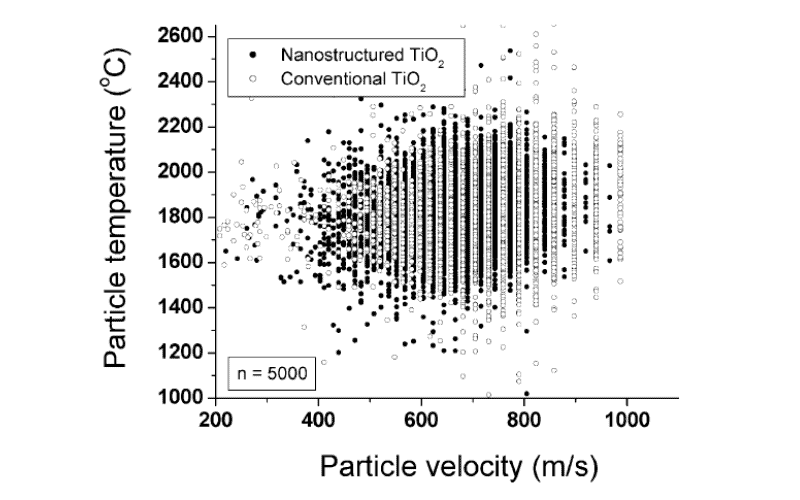March 25, 2005
Enhanced Ductility In Thermally Sprayed Titania Coating Synthesized Using A Nanostructured Feedstock
Nanostructured and conventional titania (TiO2) feedstock powders were thermally sprayed via high velocity oxy-fuel (HVOF). The microstructure, porosity, Vickers hardness, crack propagation resistance, bond strength (ASTM C633), abrasion behavior (ASTM G65) and the wear scar characteristics of these two types of coatings were analyzed and compared. The coating made from the nanostructured feedstock exhibited a bimodal microstructure, with regions containing particles that were fully molten (conventional matrix) and regions with embedded particles that were semi-molten (nanostructured zones) during the thermal spraying process. The bimodal coating also exhibited higher bond strength and higher wear resistance when compared to the conventional coating. By comparing the wear scars of both coatings (via scanning electron microscopy and roughness measurements) it was observed that when the coatings were subjected to the same abrasive conditions the wear scar of the bimodal coating was smoother, with more plastically deformed regions than the conventional coating. It was concluded that this enhanced ductility of the bimodal coating was caused by its higher toughness. The results suggest that nanostructured zones randomly distributed in the microstructure of the bimodal coating act as crack arresters, thereby enhancing toughness and promoting higher critical depth of cut, which provides a broader plastic deformation range than that exhibited by the conventional coating. This work provides evidence that the enhanced ductility of the bimodal coating is a nanostructured-related property, not caused by any other microstructural artifact.
Key words: Thermal spray; Titania (TiO2), Nanostructure, Ductility, Abrasion resistance, Bond strength
Originally published at Materials Science and Engineering: A (Volume 395, Issues 1–2, 25 March 2005, Pages 269-280)
By R.S. Lima, B.R. Marple
